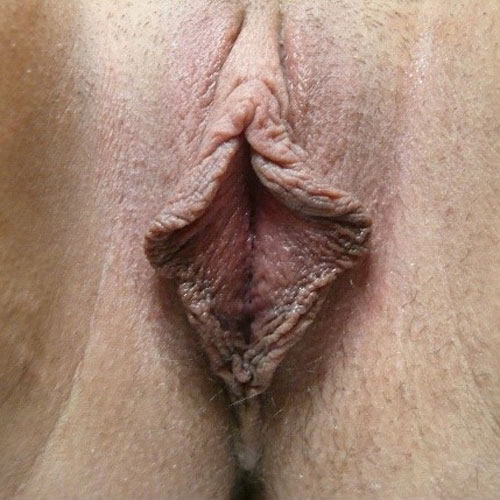Introduction
Unfortunately, it is possible for women to be allergic to semen. This condition was first reported by gynecologists in 1958, but was not well known until 1996 when a study was conducted by Dr. Jonathan A. Bernstein at the University of Cincinnati College of Medicine.1 The study connected semen allergies with food allergies because of the similar protein compositions in each. The average male ejaculate can contain XaboutoniaX, ascorbic acid (vitamin C), blood-group antigens, calcium, chlorine, citric acid, cholesterol, choline, creatine, deoxyribonucleic acid (DNA), fructose, glutathione, hyaluronidase, inositol, lactic acid, magnesium, nitrogen, phosphorus, phosphatase, potassium, purines, pyrimidines, pyruvic acid, sodium, sorbitol, spermidine, spermine, urea, uric acid, vitamin B12, selenium, and zinc – any of which can cause an allergic reaction. Though obviously natural, and required for survival, semen does perform many actions in a woman’s body that may be interpreted as “hostile” by the immune system. Clotting agents increase the chance that the sperm will stay in the vagina long enough to make their way to the egg. Prostaglandins stimulate the muscles surrounding the vagina to contract and draw the semen upwards. Either of these, as well any of the contents, could possibly be identified as a foreign substance in the body. Since the quantities of any of these substances vary from man to man, women with this condition may not experience problems with all sexual partners. 2
Epidemiology
The prevalence of this disease is largely unknown, but it is believed to affect up to 40,000 women in the United States. 3
Etiology, pathology
The hypersensitivity to semen manifests as a spectrum of systemic and/or localized clinical symptoms after exposure to specific protein components in seminal fluid. Prostate-specific antigen is believed to be the major allergen involved in the disorder, but other proteins are likely involved. 4 The mechanism of disease is typically a type 1 immunoglobulin E-mediated hypersensitivity response, presumably against the suspect protein or proteins. 5
There is no correlation between human seminal plasma hypersensitivity and fertility problems in the male or female. However, a woman with this condition can experience numerous problems and frustrations in trying to conceive because of the discomfort. 6 7 Pregnancy can be achieved either with intravaginal or subcutaneous desensitization 8 or with IVF with washed sperm. 9
Symptoms and clinical features
The localized reactions can include vaginal burning, pain, swelling, redness, or blisters, which usually occur 30-60 minutes after exposure to semen. 10


Women are repeatedly treated for suspected Candida albicans and chronic vaginitis. The systemic reactions can include generalized itching, hives, angioedema, wheezing, and in very rare cases anaphylaxis (shock). Systemic reactions are much more rare than localized, and most patients reported that the symptoms from either reaction resolved themselves (presumably once the semen was expelled from the body or neutralized by the immune system).
Diagnosis
Diagnosis is supported by clinical history, positive skin testing by an allergist trained in the method, and cessation of symptoms with condom use. In our experience, women with seminal plasma allergy have presented with provoked pain in the vestibule. After the hypersensitivity has been appropriately managed and associated pelvic floor dysfunction is treated, the pain has regressed.
Differential diagnosis
Many women are sensitive or allergic to the contents of birth control pills, latex condoms, lubricating gels, spermicides, or even their own, or their partner’s hygiene products. In addition, yeast infections can cause similar effects, and can be inflamed by sexual activity. The diagnosis of chronic vaginitis or provoked vestibular pain should raise the question of seminal plasma allergy.
Treatment/management
Treatment requires careful consideration of the couple’s sexual needs and relationship, and the intensity of symptoms. Couples need to understand the pros and cons of the options available. First line treatment includes allergen avoidance through abstinence, or condom use. Coitus interruptus (withdrawal, pulling out) may be satisfactory for some women, but others start to experience symptoms as soon as intromission occurs. These approaches may be highly effective, but are not an adequate solution for some. 11 Prophylactic use of anithistamines and intravaginal cromolyn 8% cream may alleviate local symptoms but is often ineffective.12 There is also the option of desensitization. Over a period of several hours, the woman is systematically exposed to larger and larger samples of the proteins found in semen by serial insertion of aliquots of diluted semen into the vagina. For many women, these treatments either cure them of their hypersensitivity, or make it tolerable. Cutaneous desensitization can be tried if the vaginal approach does not work. However, the frequent intercourse with semen exposure necessary at least every 2-3 days to maintain the desensitization in sickness and in health may actually lead to sexual dysfunction.
References
- Bernstein JA, Sugumaran R, Bernstein DI, and Bernstein IL. Prevalence of human seminal plasma hypersensitivity among symptomatic women. Ann Allergy Asthma Immunology. 1997; Vol 78: 54-58.
- Liccardi G, Senna G,Rotiroti G, D’Amato G, Passalacqua G. Intimate behavior and allergy: a narrative review. Ann Allergy Asthma Immunol. 2007;99: 394–400.
- Sublett JW, Berstein JA. Seminal plasma hypersensitivity reactions: an updated review. Mt Sinai J Med. 2011; 28(5):803-9.
- Sublett JW, Berstein JA. Seminal plasma hypersensitivity reactions: an updated review. Mt Sinai J Med. 2011; 28(5):803-9.
- Ghosh D, Bernstein JA. Systemic and localized seminal plasma hypersensitivity patients exhibit divergent immunologic characteristics. J Allergy Clin Immunol. 2014 Oct;134(4):969-972.e3. Epub 2014 Jul 3.
- Lee-Wong, M, Collins JS, Nozad C, Resnick DJ. Diagnosis and treatment of human seminal plasma hypersensitivity. Obstet Gynecol. 2008; 111: 538-539.
- Ferré-Ybarz L, Basagaña M, Coroleu B, BartoloméB, Cisteró-Bahima A Human seminal plasma allergy and successful pregnancy. J Investig Allergol Clin Immunol. 2006;16(5):314-6.
- Jedrzejczak P, Pawelczyk L[Pregnancy in a patient with seminal hypersensitivity]. Ginekol Pol. 2007 Nov;78(11):892-4.
- Iwahashi K, Miyazaki T, Kuji N, Yoshimura Y. Successful pregnancy in a woman with a human seminal plasma allergy. A case report. J Reprod Med. 1999 Apr;44(4):391-3.
- Shah A, Panjabi C. Human seminal plasma allergy: a review of a rare phenomenon. Clin Exp Allergy. 2004 Jun;34(6):827-38.
- Cohen A, Wong ML, Resnick D. Localized seminal plasma protein hypersensitivity. Allergy Asthma Proc. 2004; 25: 261-262.
- Lee-Wong, M, Collins JS, Nozad C, Resnick DJ. Diagnosis and treatment of human seminal plasma hypersensitivity. Obstet Gynecol. 2008; 111: 538-539.